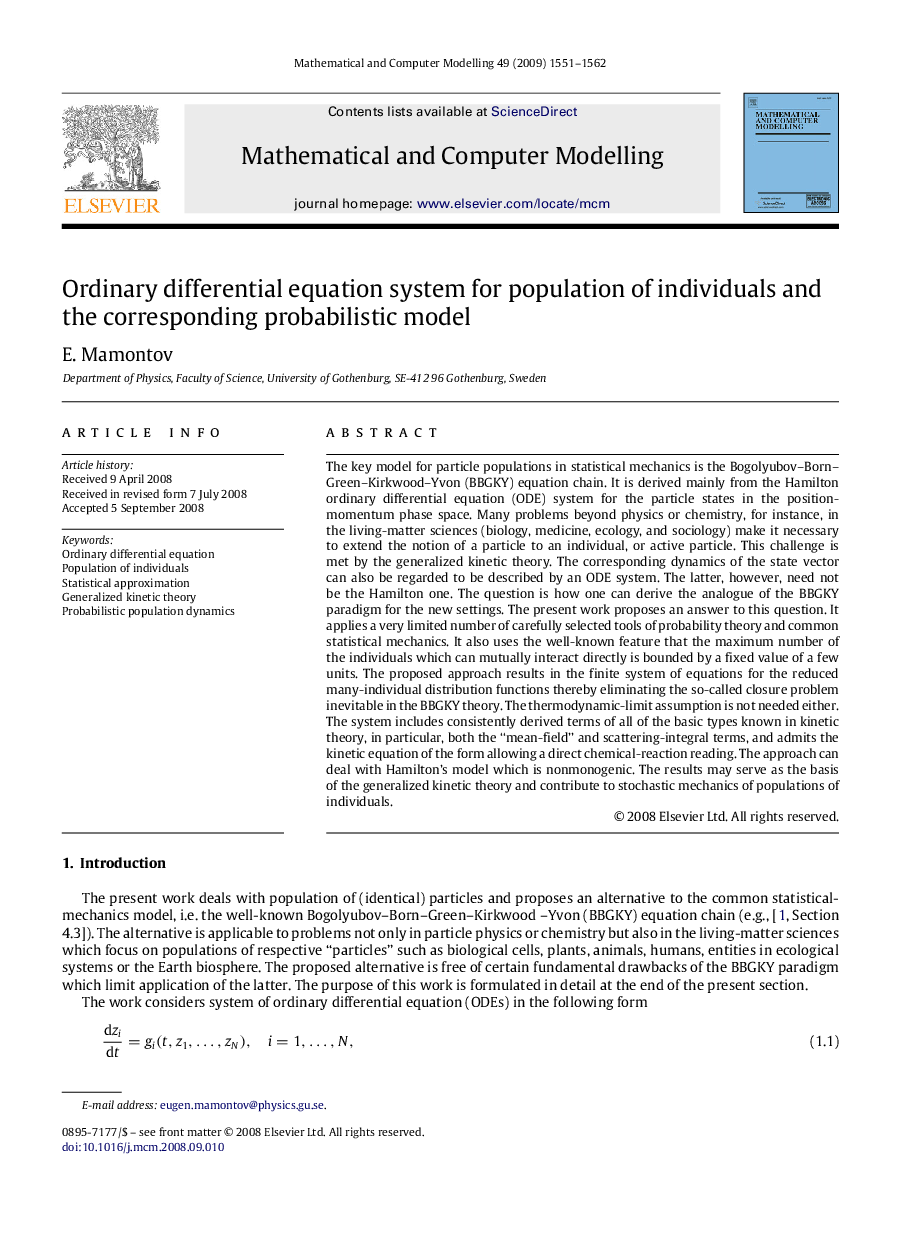| کد مقاله | کد نشریه | سال انتشار | مقاله انگلیسی | نسخه تمام متن |
|---|---|---|---|---|
| 1137306 | 1489183 | 2009 | 12 صفحه PDF | دانلود رایگان |

The key model for particle populations in statistical mechanics is the Bogolyubov–Born–Green–Kirkwood–Yvon (BBGKY) equation chain. It is derived mainly from the Hamilton ordinary differential equation (ODE) system for the particle states in the position-momentum phase space. Many problems beyond physics or chemistry, for instance, in the living-matter sciences (biology, medicine, ecology, and sociology) make it necessary to extend the notion of a particle to an individual, or active particle. This challenge is met by the generalized kinetic theory. The corresponding dynamics of the state vector can also be regarded to be described by an ODE system. The latter, however, need not be the Hamilton one. The question is how one can derive the analogue of the BBGKY paradigm for the new settings. The present work proposes an answer to this question. It applies a very limited number of carefully selected tools of probability theory and common statistical mechanics. It also uses the well-known feature that the maximum number of the individuals which can mutually interact directly is bounded by a fixed value of a few units. The proposed approach results in the finite system of equations for the reduced many-individual distribution functions thereby eliminating the so-called closure problem inevitable in the BBGKY theory. The thermodynamic-limit assumption is not needed either. The system includes consistently derived terms of all of the basic types known in kinetic theory, in particular, both the “mean-field” and scattering-integral terms, and admits the kinetic equation of the form allowing a direct chemical-reaction reading. The approach can deal with Hamilton’s model which is nonmonogenic. The results may serve as the basis of the generalized kinetic theory and contribute to stochastic mechanics of populations of individuals.
Journal: Mathematical and Computer Modelling - Volume 49, Issues 7–8, April 2009, Pages 1551–1562